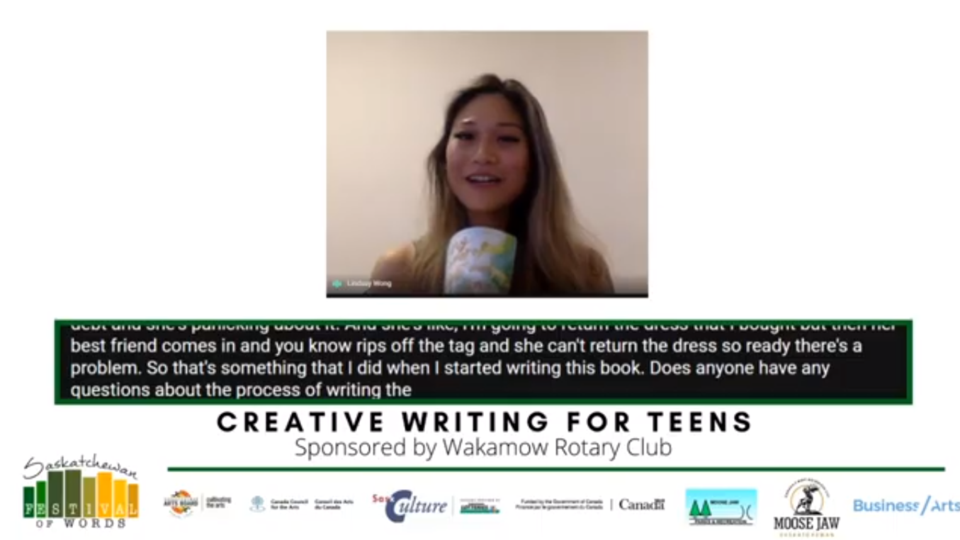When best-selling author Lindsay Wong approached her second book, she found herself tasked with the new experience of building fictional characters from scratch — a process she shared with a group of teen writers during her Festival of Words workshop.
The workshop, titled “Creative Writing for Teens,” took participants through Wong’s process in creating memorable characters that feel fully-realized and have a story to share.
For Wong, she finds fleshing out the core details of her main character is the best place to start a story. She walked workshop participants through her process, beginning with basics like names and appearances, and then moving onto deeper details like hobbies, dislikes, and potential supporting characters.
Wong’s primary piece of advice was to reach out to a character who catches their interest and then expand on their personal quirks. Drawing inspiration from real life is something lots of authors do, continued Wong, and sometimes it can be really helpful in making new characters feel unique.
“I think the key to a really memorable character [is finding] things that only you would say or write [and] a good rule of thumb is that you have to find your character interesting,” she said. “If you aren’t interested in this person in real life, you probably won't want to write about them. And if you don’t want to hang out with your character, why would your reader?”
Her next step was to give the new character a secret, something that will help define their motivation and begin the framework for what kind of story they want to take part in — often the moment when writers realize what kind of genre their new character belongs in.
“For me, I think to really understand the character, who they are and their relationships, that's really going to make your story move forward,” said Wong. “I want to make sure I know everything about this person [because] it helps me create their story.”
As an author who first published a non-fiction memoir, where all of the characters were already mapped out in real life, Wong found this process really helped her find strong roots for her second novel, which was young adult fiction.
Wong said she prefers beginning with a character and pulling characteristics from people in real life, when she envisions new characters, and then creating a narrative using what she knows about the character.
She also shared her tactic for working through writer’s block: jump to a new scene in the narrative or go back to the very beginning and think about the basics of the character.
“Usually, when I’m stuck, it's because I don’t know my character well enough and I don’t know what they will do or say next, so I think it's really important to go back to the beginning,” she said.
But, she added, the writing process is as individual as writers themselves.
“The beauty of writing is that there’s no rule and anything goes. It’s whatever works for you and your story,” she said, during the question period of the workshop.
That rings true for all aspects of building a story, she continued, as the process of constructing something new is different for everyone and doesn’t always have to be a linear journey.
“[Writing] doesn’t always have to be chronological [and] sometimes scenes don’t always make it into books,” said Wong. “And a lot of the time, writing, for me, is like a patchwork quilt where you’ve written all these scenes and now you just put them order, but it's really just whatever works for you in terms of telling a story.”
The Festival of Words continues until July 19, with a full schedule of events available here.
Stay tuned for coverage of the Festival as it progresses through the coming week.




